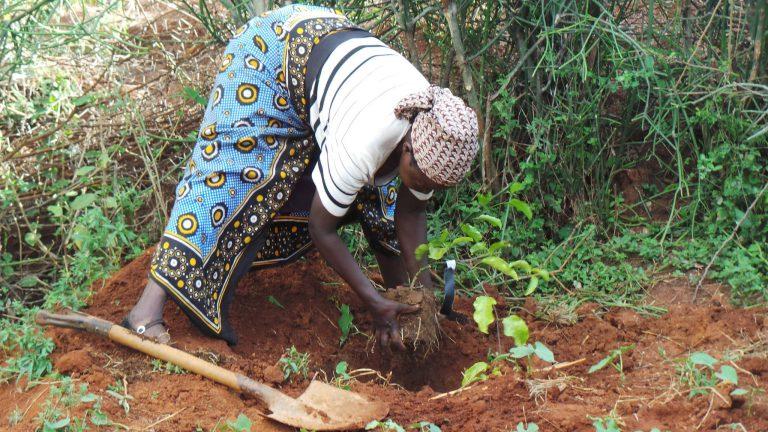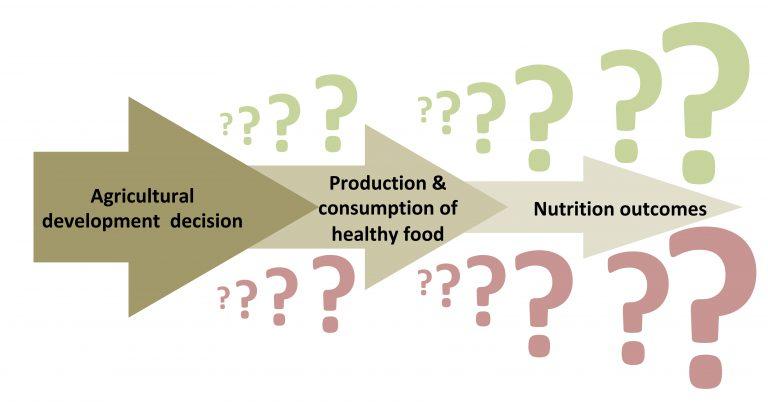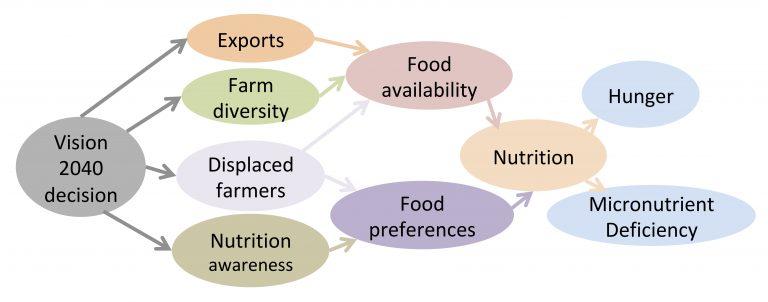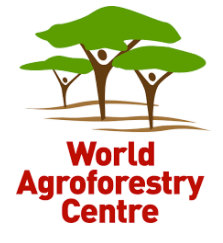How Governments Can Monitor Progress Towards Better Nutrition
Stochastic Impact Evaluation is being used to model the impacts of policies and other decisions about agricultural development on household nutrition.
Goal 2 of the United Nations 2030 Agenda for Sustainable Development calls on governments to "End hunger, achieve food security and improved nutrition, and promote sustainable agriculture". Each of the 193 countries that adopted the Agenda are faced with their own set of uncertain factors that influence their progress, making it difficult to obtain information to support policy, planning and implementation of practices that will result in better nutrition.
The numerous links between the diversity of foods produced in a country’s agricultural system and the nutrition of the population is a fundamentally complex issue. Further, the uncertainty surrounding how changes to policies might affect each of these links — perhaps positively or negatively — leads to further uncertainty about possible nutritional outcomes.
There are modelling approaches that do offer support for evidence-based decisions about agricultural development. One such set is known as Stochastic Impact Evaluation (SIE). SIE allows integration of hard, quantitative data with softer, qualitative information — and even people’s subjective opinions — into holistic models.
For the past two years, our team from the University of Bonn and the World Agroforestry Centre (ICRAF) has been applying SIE, supported by the Innovative Metrics and Methods for Agriculture for Nutrition Actions program of the UK Government. .
We used SIE to model the impact of policies and other agricultural development decisions on household nutrition.
Finding metrics to support agriculture for nutrition.
The SIE approach begins with the collaborative development of a qualitative overview model to address a specific agricultural decision. The model describes as many aspects as required about the decision. It can be quantified and programmed into any number of mathematical models that provide probable outcomes from different decisions.
Identify high-value variables
The SIE approach can also be used to define useful metrics for monitoring progress, helping to prioritize those that are critical during implementation, especially variables with both high uncertainty and large potential impact.
There is always a chance that a decision on agriculture for nutrition could turn out to be wrong and have a negative impact on households. We calculated the value of information for the expected cost of that uncertainty. Simply put, value of information is the cost of being wrong multiplied by the chance of being wrong. It represents a value for how much a decision-maker should be willing to pay to learn more about specific model variables to help improve a decision. Value of information helps us to select parts of the model that have the greatest influence on the decision and can increase clarity about the value of the decision outcome. In a case where the potential benefits of a decision are still unclear, measurements can be taken on variables with high information value to better inform the decision.
Uganda
We worked with a group of experts in Uganda to apply SIE to the decision to implement agricultural industrialization as part of Uganda Vision 2040. Model results revealed that the nutrition outcomes were most sensitive to preferences for, and access to, quality nutritional foods. The industrialization decision could have a negative influence on these factors because it is likely to displace smallholders in favour of large-scale agricultural production. The model also showed that the decision could increase the risk of hunger and malnourishment: urban areas could be flooded with former farmers without the skills needed to work in urban jobs; and who could not afford the foods from the new industrial system.
Kenya
We also worked with a group of experts in Kenya to apply SIE to a decision to plant mango and avocado trees on smallholdings. The models for dietary intake of provitamin A, zinc, iron and energy showed that the nutrition outcomes were most sensitive to the level of on-farm production and the amount consumed. The decision to plant trees was found to improve household diets.
Advantages of SIE
SIE’s ability to identify useful metrics has several advantages, the main one being that local experts provide an overview of the decision, with the most important model interactions included. This often encompasses intangible factors that might otherwise have been omitted from the model. SIE also allows for comparison of the prospects of different interventions for improving nutrition security, thus helping to identify the most promising ones. Finally, risks to the success of the intervention are identified along with weak links.
Decision analysis methods guide
We developed a Decision Analysis Methods Guide that outlines participatory procedures for experts, analysts and others to apply these approaches. The guide outlines the process for developing impact pathways and formalizing them into quantitative models. Simulations can be run to determine the likely impacts of nutrition interventions. By demonstrating improved intervention decisions with little additional investment, we hope that this approach will be widely adopted.
Whitney C, Shepherd K, Luedeling E. 2018. Decision analysis methods guide: agricultural policy for nutrition. Working Paper 275. Nairobi, Kenya: World Agroforestry Centre.
Whitney CW, Lanzanova D, Muchiri C, Shepherd KD, Rosenstock TS, Krawinkel M, Tabuti JRS, Luedeling E. 2018. Probabilistic decision tools for determining impacts of agricultural development policy on household nutrition. Earth’s Future.
Shepherd K, Hubbard, Fenton N, Claxton K, Luedeling E, de Leeuw J. 2015. Policy: development goals should enable decision-making. Nature 523:152–154.
Whitney CW. 2016. Decision modeling for trees, nutrition, and livelihoods. Gland, Switzerland: International Union for Conservation of Nature.





